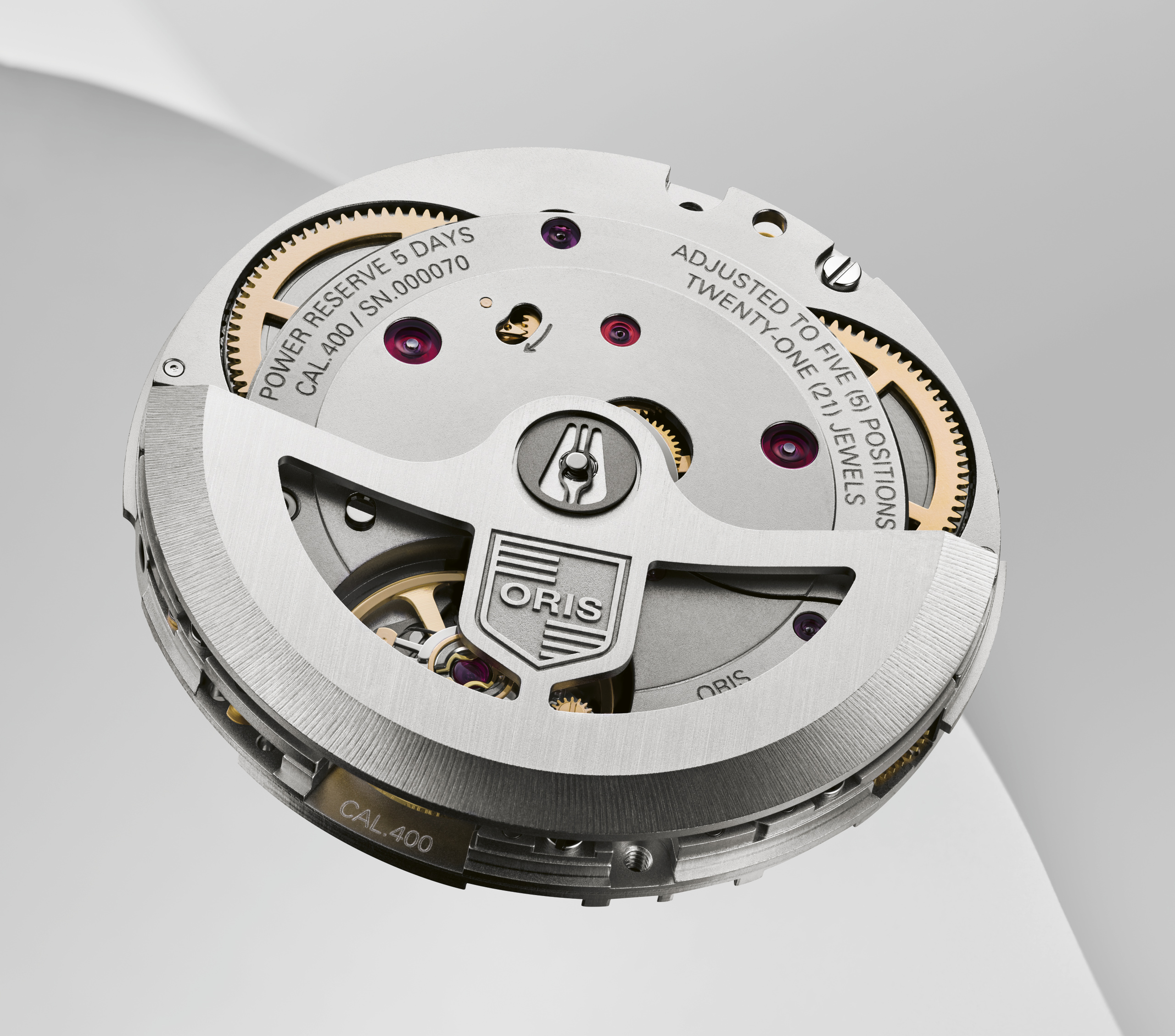The Oris caliber 400 offers a highly anti-magnetic automatic movement with a large 120-hour power reserve and additional features to enhance durability.
Caliber 400 was conceived entirely in-house, according to Oris. The research and development team engineered the movement to be highly efficient and resistant to wear and tear. “We focused on reducing torque in the mainspring — where power is stored — to help conserve power and put less pressure on moving parts. We also introduced a new wheel design into the gear train that delivers far greater efficiency. Caliber 400 retains 85 percent of the energy transferred from the mainspring, compared to a norm of around 70 percent.”
Oris says that most problems that occur in an automatic movement come from the way they are wound, and therefore designed a system, based on a slide bearing concept that only winds in one direction and that they claim are more reliable than a rotor design that sits on ball bearings and winds in both directions. “It’s much less complex and reduces wear and tear.”
Oris developed a new escapement made of silicon for the anchor and escape wheel, and other nonferrous materials for the axes that hold the balance wheel, escape wheel, and anchor in place. Around a further 30 parts are made of non-ferrous materials or non-magnetic alloys so that the impact of magnetic fields on the accuracy of Calibre 400 is reduced (exceeds the norms required by the ISO 764 enhanced anti-magnetic standard).
Further, the manufacture says, “In testing by the renowned Laboratoire Dubois, Calibre 400 deviated by less than 10 seconds a day after exposure to 2,250 gausses. For context, the latest version of the ISO 764 standard for anti-magnetic watches requires that to qualify as anti-magnetic, a watch must be accurate to within 30 seconds a day after exposure to 200 gausses. Caliber 400 recorded one-third of the deviation allowed after exposure to more than 11 times the force permitted.”
The balance wheel uses a more basic index regulator design to adjust the rate, as opposed to a more expensive free-sprung design where poising screws are used, along with manual poising to adjust the rate.
Functions include hours, minutes, center seconds, date, and stop seconds. Each movement is individually tested in five positions and is cased up adjusted to better than COSC specifications of -3/+5 (COSC chronometers are required to be -4/+6).
A twin-barrel (mainspring) design offers a long five-day (120-hour) power reserve when fully wound. The mainsprings are wound by hand or by the rotor. As mentioned above, the rotor design is unique to Oris. The company removed the ball bearing altogether and replaced it with a low-friction slide bearing system, in which a metal stud runs through a lubricated sleeve. Accordingly, the claim is that the rotor attachment design is “This is much less complex, highly efficient, and involves far less wear and tear, making it less prone to breakdowns.”
The Swiss-made automatic movement measures 30 mm in diameter, beats at 4Hz (28,800 VPH), and has 21 jewels. The rotor is skeletonized and the movement components are all machine-made with no decorations.










